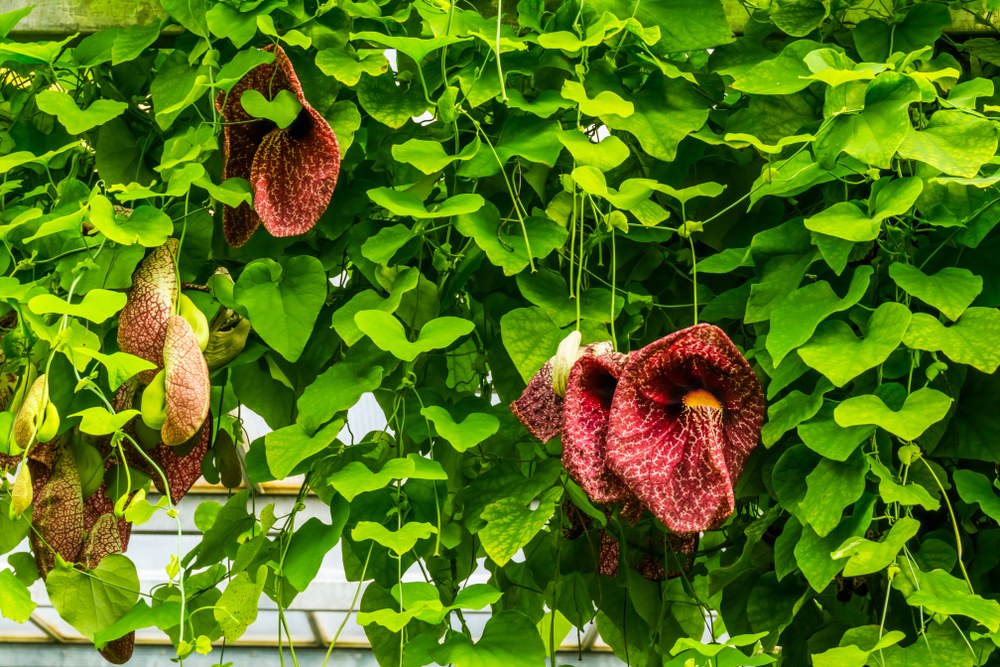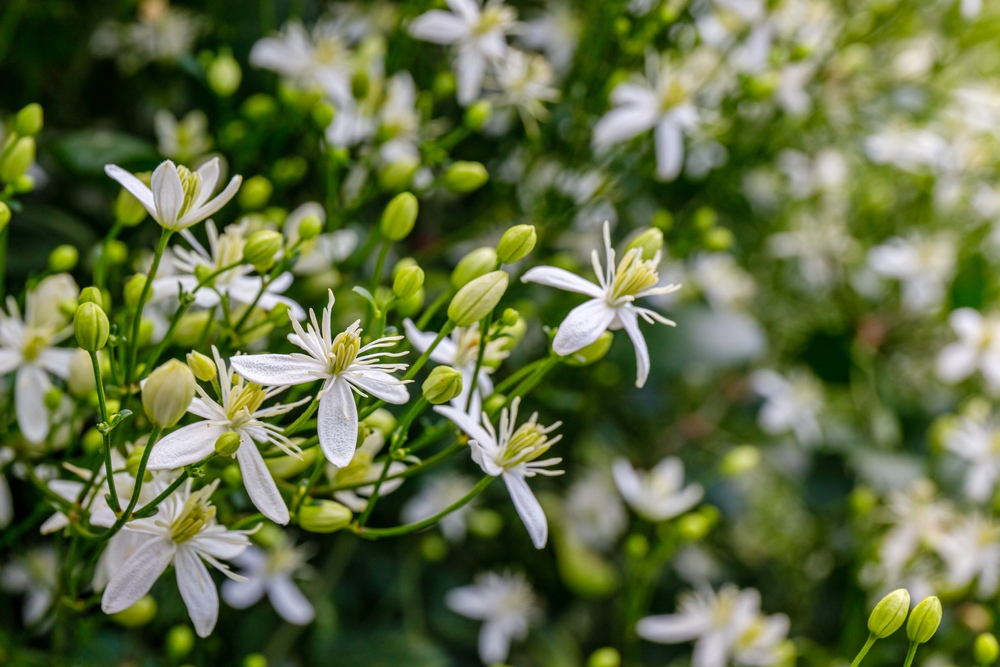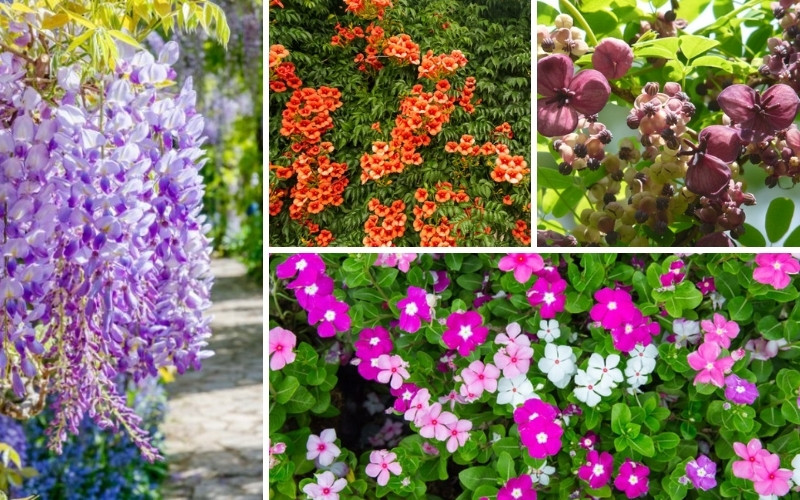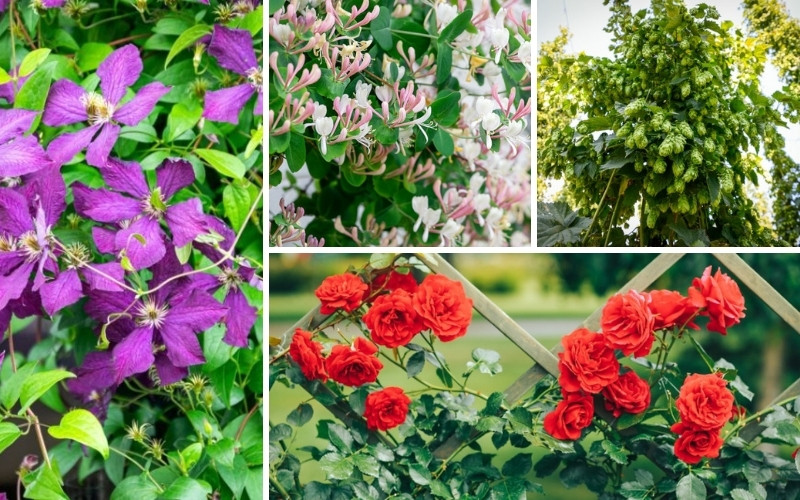Flowering vines can make a great addition to your garden. Not only do they add a colorful touch to your outdoor space, but they also act as a screening for added privacy.

Whether perennial or annual, flowering vines come in various colors and shapes.
While some of them can be easier to grow than others, all flowering vines need a bit of patience before getting established.
Keep reading to know more information about the top 10 best Kentucky flowering vines and how to care for them.
1. Dutchman’s Pipevine – Aristolochia Tomentosa

This deciduous vine is native to the southeastern and south-central regions of the U.S. from zone 5 to 8. You can spot it in the wild across moist woods south of the Missouri river.
Dutchman’s Pipevine grows to reach up to 20–30 feet and has dense heart-shaped leaves with a wool-like texture. This is why it’s perfect for an arbor or trellis.
Around mid to late spring, the Dutchman’s Pipevine produces yellow or yellowish green trumpet blooms, resembling the Meerschaum smoking pipe.
Soil: Well-draining, moist soil
Light: Sunny/partially sunny
Water: Plenty and continuous supply of water
2. Carolina Milkvine – Matelea Carolinensis

Carolina Milkvine is a type of non-invasive vine that doesn’t take over the surrounding areas. This herbaceous vine is better fit for hardiness zone 6a–8b.
Sprouting late spring, this plant grows up to ten feet long, with heart-shaped leaves getting as large as four inches in length.
When it comes to flowering, Carolina Milkvine produces maroon blooms around July–August.
Soil: Moist/dry soil
Light: Partial sun/light shade
Water: Average amount of water (avoid overwatering)
3. Passion Vine – Passiflora Incarnata

This herbaceous vine is native to the southeastern U.S. regions (USDA zones 7–11).
In the wild, Passion Vine crawls across the ground or climbs nearby trees with axillary tendrils.
The plant can grow up to 25 feet with three-lobed (sometimes five-lobed) leaves measuring 2.4–5.9 inches.
In summer, Passion Vine blooms beautiful pink, blue, and purple showy flowers. It also produces edible fruits in late summer/early fall, but they’re not that flavorful.
Soil: Well-draining soil
Light: Full sun/partial shade
Water: Requires regular watering, but it can also tolerate drought
4. Trumpet Vine – Campsis Radicans

Trumpet Vine is a vigorous climbing plant native to North America (hardiness zone 5–9).
It has large glossy leaves, reaching up to 15 inches long each. A single leaf of the Trumpet Vine plant contains 7 to 11 serrated leaflets.
The gorgeous trumpet-shaped flowers on this vine are highly attractive to pollinators such as hummingbirds. These blooms appear in summer and are usually red, orange, or yellow.
Soil: Does fine in any kind of soil (preferably well-draining)
Light: Full sun/partial shade
Water: Minimum/moderate
5. Common Hops – Humulus Lupulus

Another lovely kind of Kentucky flowering vine is the Common Hop. This perennial plant is strong with long twining stems and dark-green serrated leaves.
This plant lives for up to 20 years and is one of the dioecious kinds. This means it produces separate male and female flowers on two different plants.
Clusters of female flowers can have up to 50 pairs, each enclosed inside a yellowish-green bract. On the other hand, male flowers may have over 100 blooms in each cluster.
Soil: Well-draining sandy loam soil
Light: 6+ hours of direct sunlight/day
Water: Consistent moisture
6. Virginia Creeper – Parthenocissus Quinquefolia

This is a species of flowering vine belonging to the grape family. A close relative to Boston Ivy, Virginia Creeper grows in USDA hardiness zones 3–10.
Though limited by the structure it climbs on, Virginia Creeper can grow up to 40 feet long. It has toothed leaves often consisting of five leaflets with tapered bases and pointy tips.
In spring, Virginia Creeper produces tiny unnoticeable clusters of greenish flowers and small bluish fruits (about ¼ inches in diameter).
Soil: Tolerates a range of soil alkalinity and acidity
Light: Sun/full shade
Water: Soak the soil with water at least six inches deep
7. Virgin’s Bower – Clematis Virginiana

This perennial vine can extend up to several feet and grows mostly in the USDA hardiness zone 3–9.
Virgin’s Bower produces clusters of fuzzy white flowers in pyramidal composition around late summer. This species can grow flowers in the male, female, or both genders.
Soil: Fertile, loamy, or silty soil
Light: Partial sun
Water: Preferably medium to wet roots
8. Trumpet Honeysuckle – Lonicera Sempervirens

This is a medium-sized semi-evergreen type of climbing plant native to many areas in the U.D. ranging from hardiness zone 4–9.
Trumpet Honeysuckle has blue-green leaves with a glossy texture and oblong shape.
From spring to summer, the plant produces masses of two inches long scarlet flowers emerging at the tips of the stems.
Soil: Loam, sand, chalk, or clay
Light: Full/partial sun
Water: Low/average
9. Carolina Snailseed – Cocculus Carolinus

Carolina Snailseed is a type of climbing vine that can grow up to 15 feet long. Growing mostly in zones 5a–9b, this plant is adaptable to various conditions.
With its ovate, yellow-green foliage, Carolina Snailseed produces small green flowers. However, what’s eye-catching about this plant is its bright red fruits, appearing from June to August.
Soil: Range of soil types from sandy to clay
Light: Partial shade
Water: Low
10. Yellow Passionflower – Passiflora Lutea

Native to the central U.S. (zones 5 to 10), Yellow Passionflower can reach 15 feet in length.
The plant has tri-lobed deep green leaves and produces flowers on one and a half inches long stalks.
From May to August, you can notice the flowers on the Yellow Passionflower vine with their yellow and greenish thin fringed petals.
From these flowers emerge small black berries consumed by some birds as well as butterfly larvae.
Soil: Various types of well-draining soil
Light: Partial shade
Water: Low
Conclusion
Now that you know the 10 best Kentucky flowering vines, it should be easy to determine the perfect choice for your garden.
There’s a range of various shapes and colors of flowering vines. Just keep in mind that not all of them are good climbers.
So, it’s better to prepare your garden with a suitable structure to help your vine climb up.













